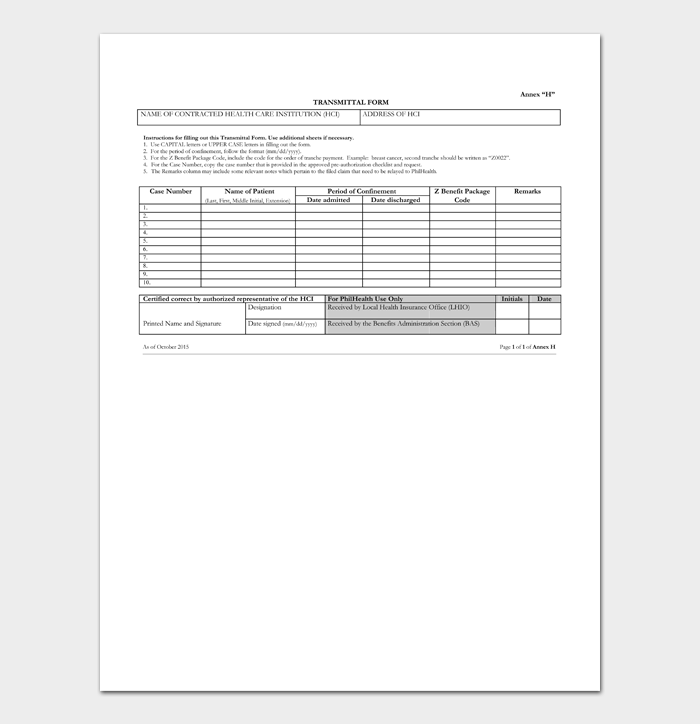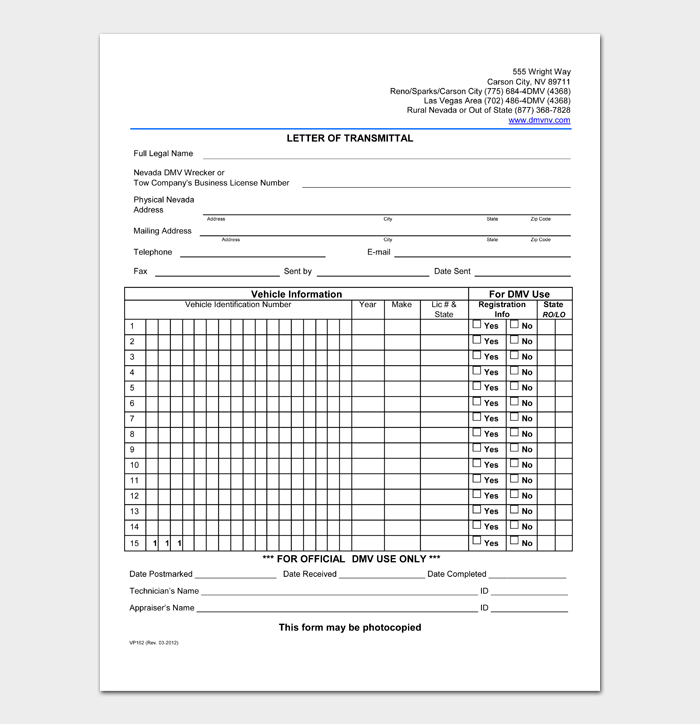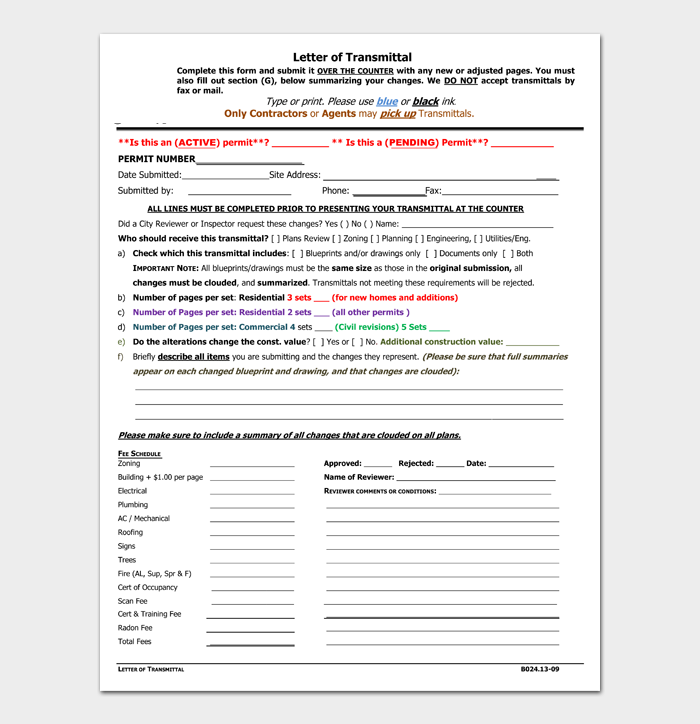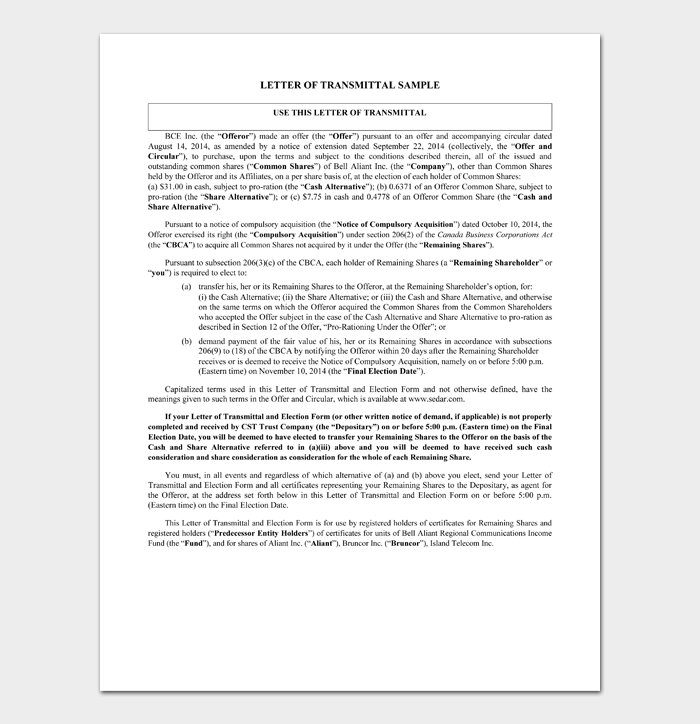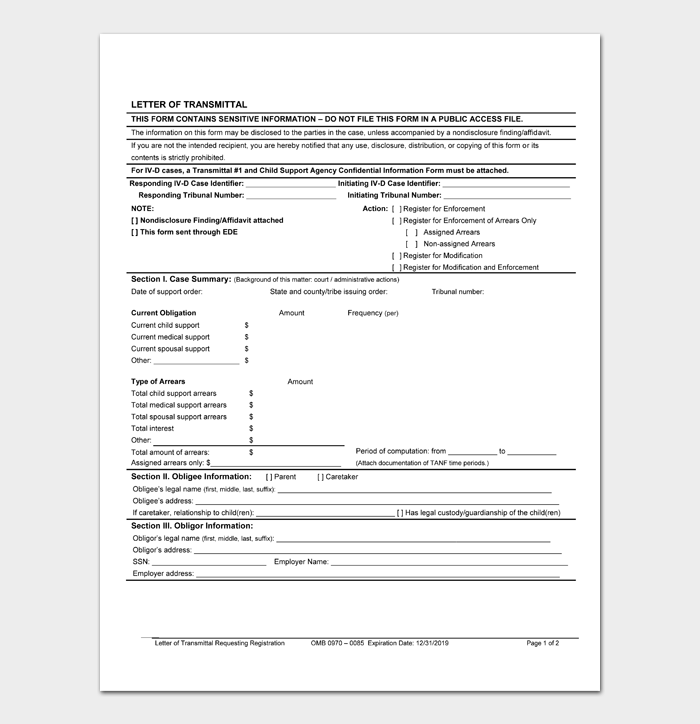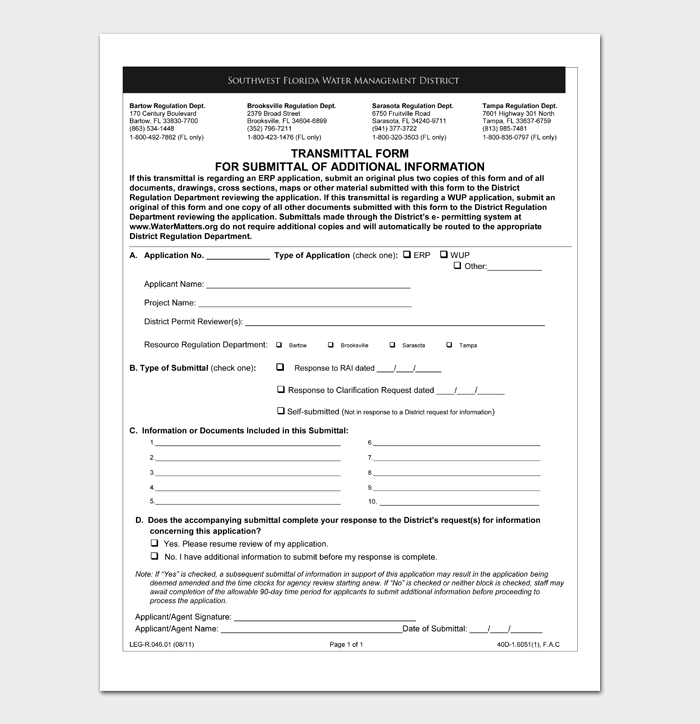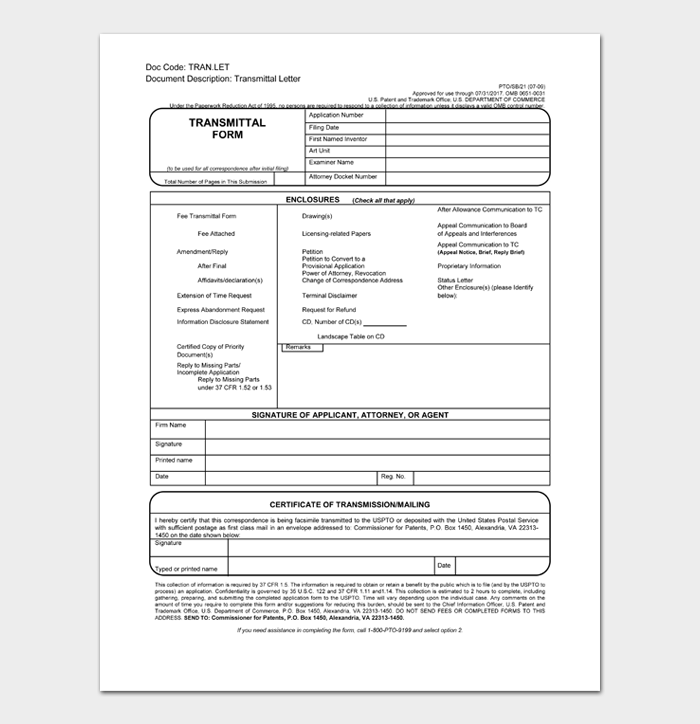Transmittal letters are used in business situations when a document or report is being sent from one person to another. They are used within organizations to send documents across the organization or even between divisions of the same organization. They are also used to send documents between companies. They may contain competitive information or technical details that should not be allowed to get into the wrong hands.
Often a brief explanation of what is in the attached document is included. There may also be instructions about how to handle the document, who it can be reviewed by, or when responses are expected.
Many busy executives will read the transmittal letter, perhaps the summary, and then route the letter and document to one of their staff for a thorough review and response. If you need a response by a specific date, this should be clearly stated within the transmittal letter.
This post will provide more detail about transmittal letters, what a transmittal letter is, when to use them, what you should include in the letter, and how to write one. A sample letter is included, along with tips and frequently asked questions about transmittal letters.
What Is a Transmittal Letter?
A letter of transmittal is usually a short one-page cover letter accompanying a document. It communicates the importance of the document and why someone should read the document. A recipient, when they read the letter, will understand what they received and why it was sent to them. It may also include:
- A summary of important conclusions
- Provide instructions if appropriate
- Mention requirements, such as a response by a specified date
When to use a Transmittal letter
Letters of transmittal can be used within an organization, between departments or divisions of the same company, and to recipients in other companies who are not familiar with your project. Some of the common uses of a letter of transmittal include:
- Reports – scientific, technical, financial, and general information
- Proposals – responses to RFI (Request for Information), RFQ (Response for Quotation)
- Specialized documents – confidential, sensitive, private
- Requesting Approval – drafts, contracts
- Reflecting Decisions – contained in a document and approved
- Changes in Schedule – communicating deviations from plans
- Outcomes – highlighting the completion of a project that met, exceeded, or provided unexpected outcomes
Essential Elements of a Transmittal Letter
As with all letters, a transmittal letter has specific elements that should be included in every letter. These include:
- Heading – your company’s name and full address, your name
- Date – the date the letter is being sent
- Recipient – Full name, address, official title, organization, company name
- Greeting – use the standard for your company, keep it professional
- Contents
- State the purpose of the letter
- Describe the document
- Why it was sent
- Summarize the important details of the document
- Next Steps, instructions, or follow up actions
- Include contact information
- Closing paragraph
- Closing salutation
Although it appears to be a lot of information and details, writers should keep the letter of transmittal to one page. It allows the reader to form a quick summary of the document and the next steps they should take in processing and responding to the document if appropriate.
How to Write
While there is no standard way to write a letter of transmittal, writers should always use the company’s standard letterhead and follow the format of letters commonly used in the company. Determine who the letter will be sent to and if you are writing the letter on behalf of your boss, ensure that you have his or her approval for the document to be sent.
If the company’s letterhead already has the name of the company, address, etc., there is no need to repeat this information. The heading should include the name of the person sending the letter, their official title and organization, and address.
Include the recipient’s full name, title, and address, along with the company name. Note that once the document has been sent, it is now the property of the receiving company.
Dates are important. The date chosen should be as close as possible to the date that the document will be sent to the other party.
Add a professional greeting that is typically used in your organization.
The body of the letter should begin by stating the purpose of the document and why it is being sent. Summarize the details, significant findings, major conclusions, and important details that the reader should be aware of immediately before perusing the document.
If there is a need for action to be taken, list the follow-up expectations, provide any instructions and let the recipient know they can contact the sender to discuss any concerns or questions they may have.
Include your contact information, final comments, and thank the reader for taking the time to review the document. Complete the letter with a professional salutation such as “Regards” or “Sincerely” and leave space for your signature or your boss’s signature as appropriate.
Letter of Transmittal Template
[Senders Name]
[Title & Company Name]
[Full address and]
[Email]
[Phone number]
[Date]
[Recipient]
[Title]
[Company or Institution]
[Full address, and]
[Email]
[Phone number]
Dear [Name]
Body – Paragraph 1 – Introduction, the purpose of the document, why it is being sent. Summarize the details, significant findings, major conclusions
Body – Paragraph 2 – Include your contact information, final comments and thank the reader for taking the time to review the document.
Body – Paragraph 3 – Next Steps and/or Call to Action
[Closing – Sincerely, Regards,]
[Signature]
[Printed Name]
Sample Letter of Transmittal
[Senders Name]
[Title & Company Name]
[Full address and]
[Email]
[Phone number]
[Date]
[Recipient]
[Title]
[Company or Institution]
[Full address, and]
[Email]
[Phone number]
Dear [Name]
The attached report, [Name of report], provides information on [Add details about the report] and our recommendations for action and the next steps based on the results summarized in this report.
Our research and analysis, summarized in this report, conclude that the recommendations are well supported and should be acted on by your company. We have provided an outline of what actions we feel your company should consider and outlined a timeline for your team, including expected results.
Thank you for providing us with the opportunity to complete this project on your behalf. We appreciate your confidence and investment in our company and the work we do. We look forward to completing additional projects with your team. Please review the official report. We are available to discuss the report and address any questions you may have.
Please feel free to contact us at [email address] or call at[phone number]. I look forward to discussing our recommendations with you further.
Sincerely
[Signature]
[Printed Name]
Transmittal Letter Templates & Examples
Tips for writing a transmittal letter
The following tips may assist when composing a transmittal letter:
- Follow a standard business format that is professional and formal
- Check your company’s policies and standards for preparing transmittal letters
- While the format should be business-like, keep it friendly and welcoming
- Include who you are, document name, why you are sending the document, next steps, and how to contact the sender
- Always proofread before sending
- Confirm company policy – format of the letter, who signs off, and any reviews that are needed before sending
- Keep a copy of the report and the letter for future reference
- The letter and document must be sent together
- The letter should have a clear, concise, and friendly tone
- Avoid adding too much detail extending the letter beyond one page
- If you must use technical or industry jargon, always use the long-form instead of short forms and abbreviations
FAQs
Several FAQs or frequently asked questions are often asked by readers. The answers to these follow:
How long should a transmittal letter be?
Business letters should be short, get to the point quickly, and typically no longer than one page. Busy executives receiving these documents and transmittal letters often delegate the review of the report to specialists. The transmittal letter should get the primary message across to executives on one page. They may not read the second page, and you have lost an opportunity to convey your report’s primary findings.
What is the most appropriate opening for a letter of transmittal?
Look at your letter from the reader’s perspective. What is the primary message you want them to take away from the first paragraph? And also from the transmittal letter in general. Every paragraph should add value to the reader; however, the first paragraph should grab their attention and motivate them to read the rest of the letter and the summary or conclusions section of your report. Don’t forget to include a call to action in the closing paragraph of your letter. You want to prompt them to take action based on the recommendations in the report.
Key-points
Business letters, particularly transmittal letters, should be formal and well written. They need to convey a summary of the key findings of the document, the next steps, and a clear call to action. They should entice the reader to follow through with the recommendations contained in the report.
Transmittal letters should be no more than one page, professional and free of grammar and spelling errors. Have a colleague review the letter for mistakes? Check that the recipient’s name and company are spelled correctly.
Follow your company’s process for approval and signature of the report and sign-off of the letter.
Always keep copies of the transmittal letter and report. It is surprising how often letters are sent without copies of signed transmittal letters retained for future reference.





